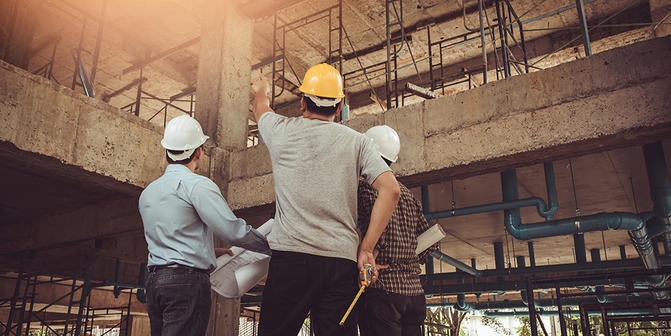Economic Stimulus – Let’s Do Building Retrofits RIGHT
Let's Save Energy
Alliance to Save Energy's Blog

The COVID-19 crisis is challenging many of the basic foundations of our society, stressing the capacity of healthcare facilities and creating the need to quickly adapt existing vacant facilities into temporary critical healthcare facilities. We need a way to rapidly transform buildings to support public health and other emergencies while improving facility efficiency and resilience. How we rebuild following this crisis will help define the future for generations. To rise to the challenge, we must begin with the lessons of the past.
With the passing of the Coronavirus Aid, Relief and Economic Security (CARES) Act – and with another multi-billion dollar stimulus bill sure to follow – it is time to revisit the energy efficiency programs of the American Recovery and Reinvestment Act (ARRA), which was passed as a response to the 2008 economic crash. It’s easy to see the success of these programs, with the $20B+ investment projected to save 400 million MMBtus of energy over the next four decades. ARRA programs retrofitted homes and buildings, making them more efficient while creating good-paying jobs for local contractors, engineers, and manufacturers at a time when they needed it most. While ARRA is a useful guidepost, the technological advancements and global crises of the last decade must inform the next set of efficiency and infrastructure-related stimulus programs. With so much at stake, we need to use this opportunity to start retrofitting our public buildings the RIGHT way.
The RIGHT way is to focus simultaneously on adaptability, reliability, sustainability, and wellness as part of a comprehensive, systems-level building retrofit. RIGHT is an acronym that defines the functional elements of these flexible, highly efficient facilities of the future.
Resilient – Facilities should be designed or retrofitted to maintain critical operations during severe weather, seismic events, electric grid outages, cybersecurity breaches, and public health emergencies. Backup power generation, energy storage, distributed generation, and micro-grids can not only increase resilience, but also increase sustainability, increase demand flexibility, and grid efficiency.
Intelligent – Internet of Things (IoT) sensors, automated controls, data analytics, and high-speed networks provide a technology infrastructure capable of supporting a variety of building systems, distance learning, and clinical applications in addition to enhancing facility efficiency, occupant wellness, and productivity. The networking infrastructure should be cyber-secure and segmented to support critical and non-critical systems and applications.
Green – Sustainable buildings are becoming the norm in the public sector and include ENERGY STAR or LEED certified buildings, along with an increasing number of zero carbon/energy buildings. Regardless of the approach, energy efficiency is always a top priority for green building design and retrofits, along with other criteria including water conservation and the use of renewable energy. These improvements provide both energy and operational savings that can be used in performance-based contracting and energy services business models to leverage stimulus funds with private capital at low interest rates.
Healthy – The next frontier in sustainable buildings is focused on occupant health, wellness, and productivity. The relatively new WELL, Fitwel and RESET standards represent best practices in creating and maintaining healthy environments under normal occupied conditions. During a public health emergency, these healthy building systems and practices provide an additional level of protection for patients and staff in critical care situations.
Transformable – The ability to quickly transform occupant space in a public building, whether that be in a college dormitory, military barracks, K-12 school, or convention center, into a temporary critical care facility or emergency shelter is a critical element of future retrofits. This requires flexible, adaptable designs that allow for quickly adding critical HVAC filtration equipment and room pressurization systems, provision of extra power capacity to accommodate clinical equipment and UPS systems, and sufficient excess network capacity to accommodate clinical and building technology systems.
We often hear the call to “build back better” after hurricanes and other disasters and improve the resilience and sustainability of damaged buildings to prepare them for the next time. While we hope “next time” is a long time from today, we owe it to our communities to heed the call and leverage economic stimulus funding to retrofit our buildings RIGHT for the future.
We are looking forward to working with our Associates and other interested parties in further developing and advocating for this public building retrofit program as part of the next stimulus package.
Hoping you all remain safe and healthy in days and weeks ahead.
RECENT BLOG POSTS
STAY EMPOWERED
Help the Alliance advocate for policies to use energy more efficiently – supporting job creation, reduced emissions, and lower costs. Contact your member of Congress.
Energy efficiency is smart, nonpartisan, and practical. So are we. Our strength comes from an unparalleled group of Alliance Associates working collaboratively under the Alliance umbrella to pave the way for energy efficiency gains.
The power of efficiency is in your hands. Supporting the Alliance means supporting a vision for using energy more productively to achieve economic growth, a cleaner environment, and greater energy security, affordability, and reliability.



